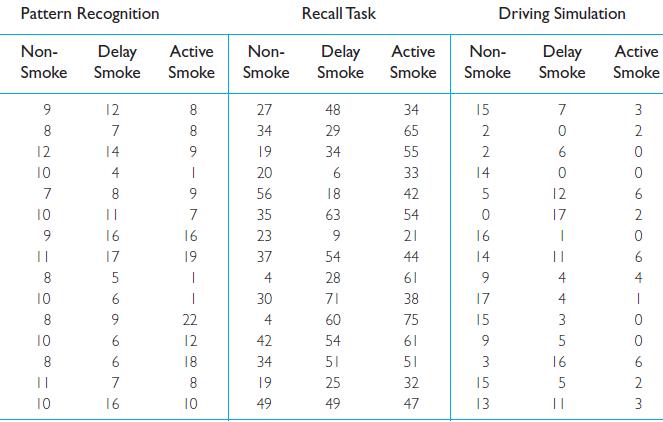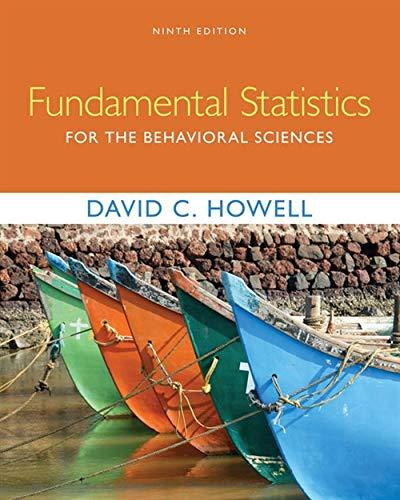In Exercise 16.3 you ran a test between Groups 1 and 3 combined versus Groups 2 and
Question:
In Exercise 16.3 you ran a test between Groups 1 and 3 combined versus Groups 2 and 4 combined. How does that test compare to testing the main effect of Location in Exercise 17.16? Is there any difference?
Exercise 16.3
Now we will expand on the analysis of Exercise 16.2.
a) Run a one-way analysis of variance on treatments 1 and 3 combined (n = 20) versus treatments 2 and 4 combined. What question are you answering?
b) Why might your answer to part (a) be difficult to interpret?
c) We will see a more appropriate analysis of variance for this design in the next chapter.
Exercise 16.2
Another way to look at the Eysenck study mentioned in Exercise 16.1 is to compare four groups of participants. One group consisted of Younger participants who were presented the words to be recalled in a condition that elicited a Low level of processing. A second group consisted of Younger participants who were given a task requiring the Highest level of processing (as in Exercise 16.1). The two other groups were Older participants who were given tasks requiring either Low or High levels of processing. The data follow:
Exercise 17.16
For Exercise 17.15 use the protected t test to compare the Nonsmoking group to the other two groups in the Driving Simulation task.
Exercise 17.15
Compute the necessary simple effects to explain the results of Exercise 17.13. What do these results tell you about the effects of smoking?
Exercise 17.13
Run the analysis of variance on the data in Exercise 17.12 and draw the relevant conclusions.
Exercise 17.12
In Chapter 16 we had three different examples from a study by Spilich et al. (1992) in which we compared three groups on the basis of smoking behavior. We can set this design up as a 3 × 3 factorial by using Task as one variable and Smoking group as the other.
The dependent variable was the number of errors the participant made on that task.
These data are repeated on the next page.
Plot the cell means for this design.
Step by Step Answer:

Fundamental Statistics For The Behavioral Sciences
ISBN: 9781305652972
9th Edition
Authors: David C. Howell




